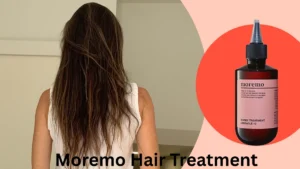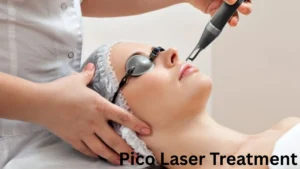What is Botox Hair Treatment?
Botox Hair Treatment Side Effects: Hair Botox is a deep conditioning treatment designed to smooth, repair, and rejuvenate damaged hair. Despite the name, it does not contain botulinum toxin like facial Botox. Instead, it’s called “Botox” because of its smoothing and anti-aging effects on hair.
Hair Botox uses a blend of keratin, collagen, amino acids, proteins, and vitamins to restore lost moisture and repair damaged cuticles. It’s suitable for all hair types, especially dry, frizzy, or color-treated hair.
Is Hair Botox Safe?
Generally, yes. Most reputable salons use formaldehyde-free or low-chemical formulations. When performed by a trained professional, hair Botox is safe and effective. However, as with any cosmetic treatment, side effects can occur—especially with incorrect application or product misuse.
Common Side Effects of Hair Botox
Here are some of the most reported, non-serious side effects:
| Side Effect | Frequency | Description |
|---|---|---|
| Scalp irritation | Common | Redness, itching, or mild burning sensation |
| Greasy or heavy hair | Common | Due to over-saturation of the product, especially in the first few days |
| Temporary hair shedding | Common | Some shedding may happen as your scalp adjusts |
| Scalp sensitivity | Common | Tingling or sensitivity for a few days after treatment |
| Mild allergic reactions | Less Common | Swelling, rash, or redness in sensitive individuals |
These side effects are usually mild and resolve within a few days with proper aftercare.
Rare or Severe Side Effects of Hair Botox
While not common, these serious or long-term effects can occur, particularly if you use low-quality products or apply the treatment too often:
| Side Effect | Severity | Notes |
|---|---|---|
| Hair breakage | Moderate | Can occur with overuse or poor-quality application |
| Hair loss | Severe | Rare, may occur due to inflammation or allergic response |
| Chemical build-up | Moderate | Excess product left in hair or repeated treatments without cleansing |
| Change in hair texture | Moderate | Hair may become overly soft or limp with repeated use |
| Severe allergic reaction | High | Includes facial swelling, rash, or breathing difficulty (seek medical help) |
Who is More at Risk?
Hair Botox may not be for everyone. You may be more prone to side effects if you:
- Have sensitive skin or scalp conditions
- Are allergic to protein-based ingredients
- Are pregnant or breastfeeding (consult your doctor first)
- Use heat styling tools excessively
- Have had previous adverse reactions to salon treatments
Read more: Lice Treatment Guide 2025: Symptoms, Options, Costs & Prevention
How to Minimize the Side Effects of Hair Botox
- Choose a certified salon: Only trained professionals should apply the treatment.
- Request a patch test: Especially important for those with allergies or sensitive skin.
- Use proper aftercare: Use sulfate-free shampoos and avoid washing your hair for 2–3 days post-treatment.
- Wait between treatments: A gap of at least 3–6 months is recommended.
- Avoid DIY kits: Home versions are often less safe and more error-prone.
Read more: Acanthosis Nigricans Treatment (2025 Guide): Causes, Diagnosis & Effective Skin Remedies
When to See a Doctor
Contact a dermatologist or physician if you experience:
- Persistent redness or itching
- Unusual hair fall or bald patches
- Swelling around the face or neck
- Breathing difficulty
Expert Insights
“Hair Botox is a deep-conditioning treatment, not a medical procedure,” says Dr. Kemi Fabusiwa, an NHS dermatologist. “But like any cosmetic product, it’s essential to use it wisely and sparingly.”
Celebrity hairstylist Dimitris Giannetos, who has worked with Gigi Hadid and Amal Clooney, notes:
“It’s perfect for damaged or frizzy hair, but I always recommend clients avoid overdoing it.”
Frequently Asked Questions (FAQs)
Q1: Is hair Botox suitable for colored or bleached hair?
Yes, it can actually help restore moisture and reduce damage.
Q2: Can hair Botox help with bald spots or hair loss?
Not directly, but it may improve scalp health and reduce breakage, which can promote better hair retention.
Q3: Can I do this treatment at home?
While DIY kits are available, salon applications are far safer and more effective.
Q4: How often should I get hair Botox?
Every 3 to 6 months is ideal. Frequent use may increase the risk of side effects.
Q5: Is the treatment permanent?
No. The effects last between 2 to 6 months depending on your hair type and aftercare.
Final Thoughts
Hair Botox is one of 2025’s most popular treatments for smoother, shinier, and healthier-looking hair. However, like any hair product, side effects are possible—especially when quality or application is compromised.
By choosing a certified salon, performing a patch test, and maintaining a healthy hair routine, you can enjoy the benefits of Hair Botox with minimal risk. When in doubt, consult a dermatologist or trichologist to see if it’s right for you.





